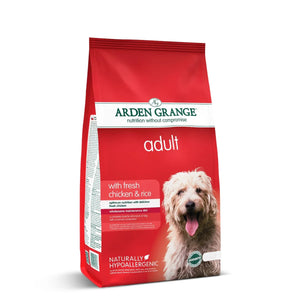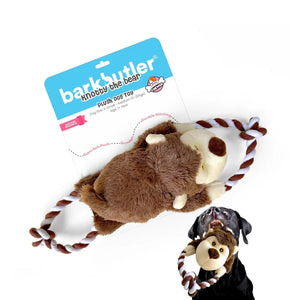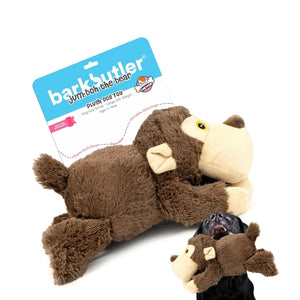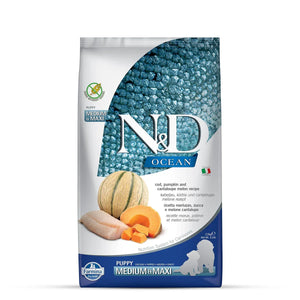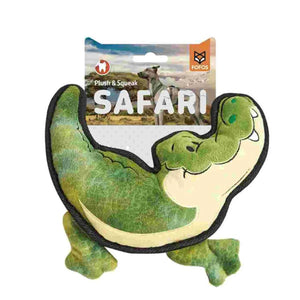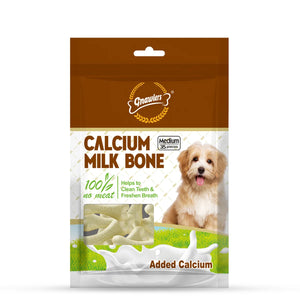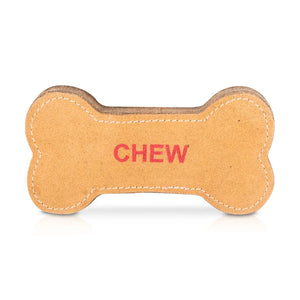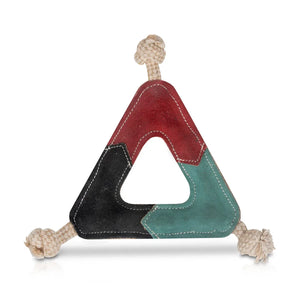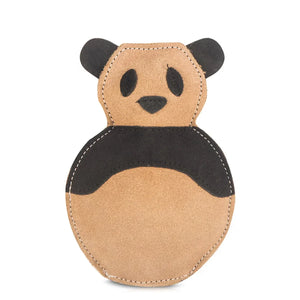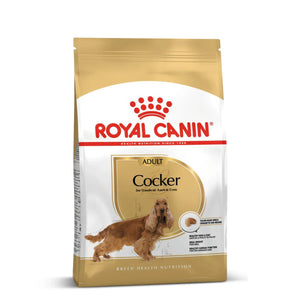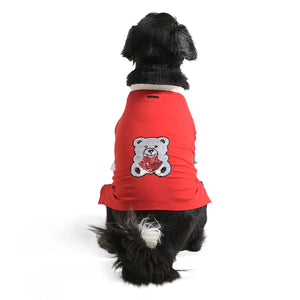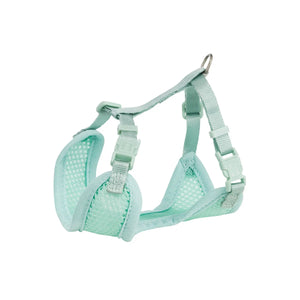Think majestic and think of the magnificent Siberian Husky. This breed is a graceful dog that not only looks beautiful but is super energetic too. After all, everyone knows that those almond-shaped eyes are striking in every way. From amber, blue, and brown, some Siberian Huskies even have bi-eyes, which means having one brown and one blue eye. Those piercing eyes can make anyone stand; however, you will realize they are creatures of love once they roll out their tongues and break into a natural smile. Originating from Southeast Asia, Siberian Huskies have high endurance and are extremely affectionate. All in all, these are active dogs who deserve an active owner - someone who can make them run and play to keep them stimulated.
Protected by a thick double coat, the winter season will not stop your Siberian Husky from playing and having a good time. They can scamper around the whole day if you don’t stop them. As with all dogs, proper care and attention can make this breed an ideal one for you. They can be wonderful companions and get along extremely well with children too.
|
Size |
Medium |
|
Coat |
A thick, double-coat |
|
Color |
White, Grey, Black, Red |
|
Average Lifespan |
12 to 15 years |
|
Features |
Have a high prey drive, are apartment friendly, extremely loyal, and easy to groom |
The Story
Did you know that Siberian Huskies trace their ancestry to a wolf that is more than 35,000 years old? Yes! Research suggests that the Chukchi tribe who were people behind developing a cold resistant dog breed, used the Siberian Taimyr wolf’s bloodline. The Chukchi wanted a working dog who could withstand the cold temperatures as they traversed frozen terrain.
It was in the year 1925 that Siberian Huskies came to the forefront as the mushers led relay teams of these sled dogs over 650 miles in less than six days. This was done to deliver the ‘recovery serum’ to Nome, Alaska, which was the raging hotspot of Diphtheria at that time.
For years, Siberian Huskies have been used for pulling light loads. They are quick and nimble footed which gives them their effortless gait. Here is a bit of trivia: Siberian Huskies are cousins of the Alaskan Malamute! Huskies are packed dogs, and this is why they settle well in family life and even get along well with other dogs. They are innately friendly, which often works against them if you would like to have one as a watch dog! This breed is naturally clean, and the coat can do wonders if groomed regularly.
The American Kennel Club recognized the Siberian Husky as a breed in the year 1930.
What’s a Siberian Husky Breed Like?
Temperament
Like we said before, the Siberian Husky is a friendly, playful dog - so much so that they may even tempt you to play with them. They have charming playful demeanors. With a mind and body that likes to run around, Huskies are known to be eager when it comes to physical activities and sports.
Owing to their friendly nature, Siberian Huskies like to greet whoever comes over and love to wag that bushy tail. It is due to their loving nature that you cannot depend on a Siberian Husky to be a guard dog. This breed is not very active when it comes to barking, however, they are extremely ‘talkative’. Moaning and whining comes naturally to them when they ask for your attention. Siberian Huskies may even try to communicate with you with their loud moans when they want to express themselves! Sometimes, they express themselves through a loud, melodic howl that is endearing - they may do it as a response to a sound or simply to say ‘I love you’ to you!
Even though this breed is not a people pleaser, they live for their family and share a strong bond of love. The pack mentality is embedded in their DNA due to which they are happiest when engaging with others. This breed is friendly and loving with children. They are patient with their mischief and are great companions. However, it is important to teach children to treat their dogs with respect and love.
Siberian Huskies are known to be so tolerant, that if they are raised with a cat, they may even coexist happily!
It is not a good idea to leave this breed alone for a long time as they hate being on their own. It can make them feel anxious and nervous. They may even try to break free from their crate or cages when left solitary. They respond well to training and if you encourage right behavior with treats or rewards then you may expect them to learn new behaviors fast.
Features
The Siberian Husky is a medium-sized dog that is appealing in every way. With erect ears and a long tail, these dogs stand out from the crowd. They have blue or brown eyes and may even have one of each which adds to their beauty. The piercing almond-shaped eyes can terrify anyone however, they are extremely friendly and loving. Since they originated in areas with cold climates, they have a very dense and plush coat with plenty of undercoat. You may even find a small ruff around the neck with no long fringes on the tail or legs. The colour of Siberian Huskies ranges between black, white and red. They may even have markings on the chest and legs.
Siberian Huskies are known to have independent and friendly natures. Their need to be independent may make them come across as stubborn but that is not the case. These dogs thrive in human company and respond well to training. They enjoy a good game of running and are extremely friendly with both children and adults.
Colors
Black, white and red with white markings.
Overall health
Huskies are healthy dogs overall and even have a longer lifespan as compared to other dog breeds. They usually live up to 12 to 15 years. They remain healthy during this time, but you need to take care that they get a nutritious diet. If you add lots of exercise to their daily routine, they will have a good metabolism and will remain safe from falling prey to ailments.
It is important to keep in mind that Huskies are prone to two kinds of health conditions, they are hip dysplasia and eye problems. While hip dysplasia can be a genetic condition, early detection can help in treating mild cases and taking proper care of your husky. Corneal dystrophy and juvenile cataracts are common eye problems in Huskies. You can consult a Zigly vet to get regular eye checkups done.
When to Visit the Vet?
It is crucial as a responsible pet parent to take your Siberian Husky or any other dog that you may have, to the vet for regular checkups. If you notice your Husky or your pet is exhibiting any unusual symptoms, it is time to take them to your nearest Zigly Experience Center and consult with our vets for a quick check-up.
When your Husky is in the puppy phase, you must schedule a consultation with Zigly vets for vaccination and immunization schedule, prescriptive diet and meal plans catered to your puppys' needs.
Upon reaching senior age, you will need to bring in your Husky for vet consultation every six months to get them checked for eye problems or even hip dysplasia or any other age-related problem.
Caring For a Husky
Since Siberian Huskies were bred as pack teams, they get along very well with other dogs. Their friendly nature allows them to be raised with other pets too - even a cat! With proper care and guidance, they will learn to coexist happily.
It is their loving nature that makes them great family dogs and have the capability to develop strong bonds with children as well. However, they have a very strong prey drive, and this may pose to be a problem if you have pet rodents in or around your house.
Grooming
Bred to survive extremely low temperatures, the Siberian Husky has a dense, double coat. Their undercoat is soft whereas the topcoat is quite thick. It is due to this reason that this breed is not very comfortable when the temperatures rise.
Looking at the coat, one may apprehend that a Husky would shed a lot. But they do not shed for almost the entire year and only begin to shed excessively for three weeks - which is known as blowing the coat. It is during this time that you will find your home to be full of tufts of hair everywhere!
FAQs
Q1: What makes Siamese Cats unique compared to other breeds?
A: Siamese Cats are known for their striking almond-shaped blue eyes, slender bodies, and vocal, social nature. They are highly affectionate and often compared to dogs for their loyalty and expressiveness.
Q2: How social are Siamese Cats?
A: Very social! Siamese Cats thrive on human interaction and often follow their owners around. They dislike being left alone for long periods and need daily play and engagement.
Q3: What kind of grooming do Siamese Cats require?
A: They have short, smooth coats that require minimal grooming. Brushing twice a week helps control shedding and hairballs. Dental care is also important due to their susceptibility to dental issues.
Q4: Are Siamese Cats prone to any health problems?
A: Yes, they can be prone to respiratory infections, hip dysplasia, and flea/tick infestations. Regular vet checkups and vaccinations are essential for maintaining their health.
Q5: Can Siamese Cats be trained?
A: Absolutely! Siamese Cats are intelligent and respond well to training. They can even be taught to walk on a leash and perform tricks.
Conclusion
The Siamese Cat is a truly unique and captivating breed, combining beauty, intelligence, and affectionate companionship. With their rich history rooted in Thailand and their outgoing personality, they make wonderful pets for those ready to dedicate time and attention. Proper care, including regular grooming, health checkups, and plenty of social interaction, ensures your Siamese Cat stays happy and healthy. If you seek a loyal, talkative, and loving feline friend, the Siamese Cat is an excellent choice for your family.
If you groom your husky regularly and brush their coat thoroughly twice a week, you will be able to keep the hair situation in control. Since this is a comparatively cleaner breed, you won’t be required to bathe them regularly. A nice trip to the grooming salon with a clean bath, and trimming of hair and nails should do the trick. And do that, all you need to do is bring your husky baby to your nearest Zigly Experience Center and our certified groomers will take care of the rest.





